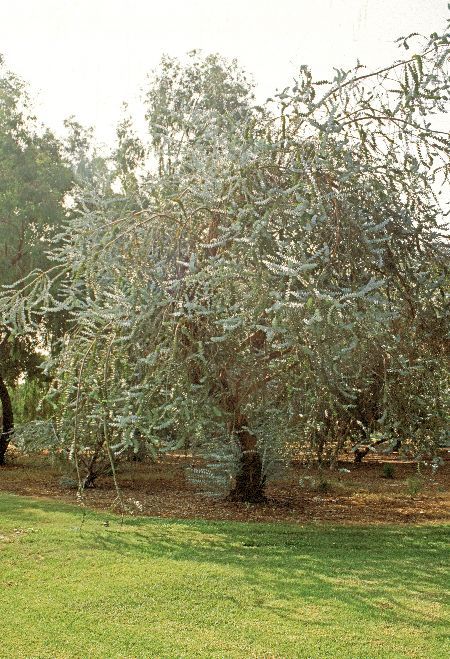
Eucalyptus pulverulenta
Silver Mountain Gum
The unusual positioning of rounded, silver-dollar shaped leaves along stiff stems of this Eucalyptus, plus its unique silvery color, make this plant's appearance unique. It is useful in floral arrangements, and produces an eye-catching statement in the landscape. Canopy coverage: 177 square feet.
[Read More]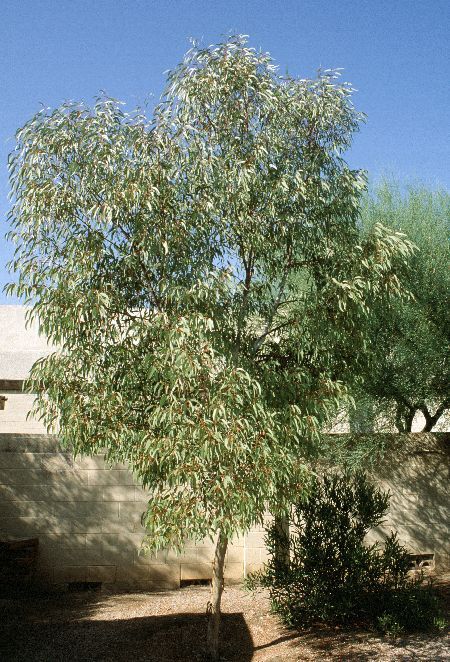
Eucalyptus sideroxylon 'Rosea'
Red Ironbark
Red Ironbark, cultivar 'Rosea', requires a lot of space, both above (no high wires) and side to side. Be sure there is plenty of room before planting. Growth habit is variable and ranges from upright to weeping. Select plants at the nursery carefully. Colorful showy flowers and deeply fissured, reddish brown bark are attractions. Canopy coverage: 2,827 square feet.
[Read More]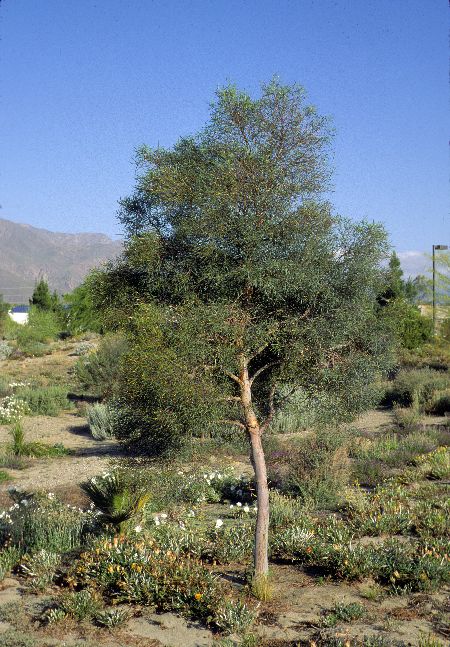
Eucalyptus spathulata
Swamp Mallee
The leaves of Swamp Mallee are atypical compared to other Eucalyptus. They are long, slender and ribbonlike to 2 to 3 inches long. The smooth, reddish peeling bark of its trunk and branches also offer interest. Makes a nice evergreen screen, blending well with desert plants. Canopy coverage: 707 square feet.
[Read More]Ficus carica
Fig Tree
Fig plants can be maintained at about any size and even work well as shrubby trees. If damaged by cold, they often regrow to take on a shrub form. Check locally for varieties best-suited to your region. Canopy coverage: 314 square feet.
[Read More]Forestiera neomexicana
Desert Olive
Train Desert Olive as a small tree or shrub. Appealing features include the light gray bark, which contrasts nicely with its bright green leaves. Attractive yellow fall color. Canopy coverage: 50 square feet.
[Read More]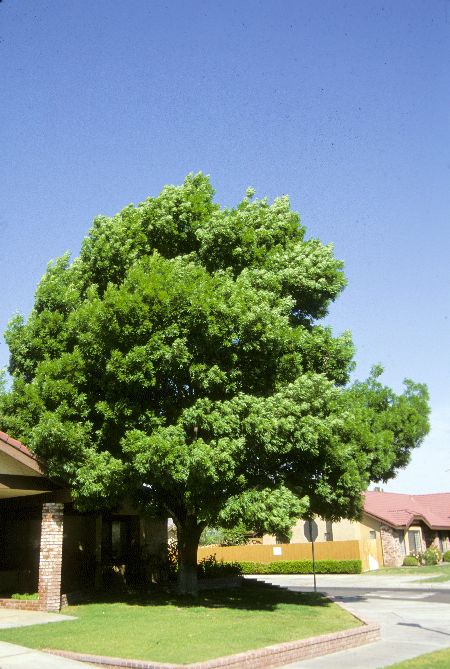
Fraxinus oxycarpa 'Raywood'
Raywood Ash
Raywood Ash is an excellent specimen tree for shade. Dramatic purple to red fall color is an attraction. Canopy coverage: 491 square feet.
[Read More]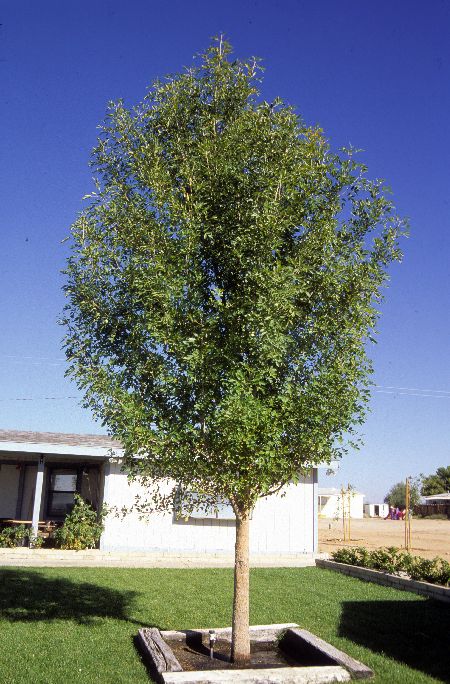
Fraxinus velutina
Arizona Ash
Arizona Ash has an open, round-headed form. Provide additional water when conditions are windy. Attractive yellow fall color. Canopy coverage: 707 square feet.
[Read More]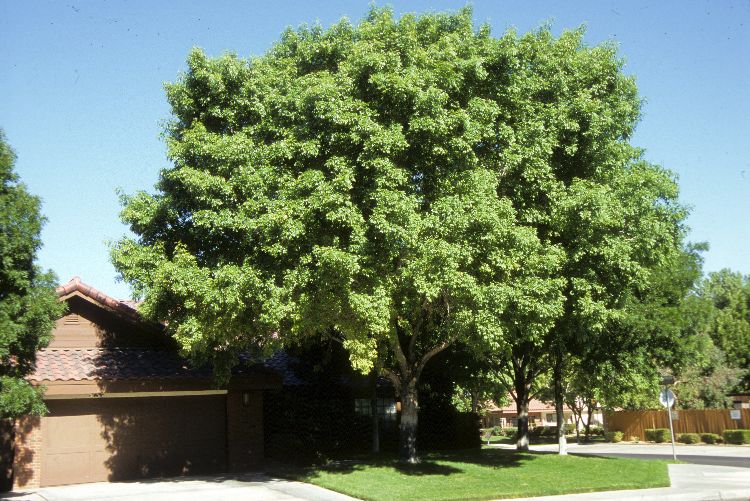
Fraxinus velutina 'Modesto'
Modesto Ash
Modesto Ash can get too large for many residences so select and plant with mature size in mind. Excellent large-scale shade tree. Yellow fall color. Canopy coverage: 1,257 square feet.
[Read More]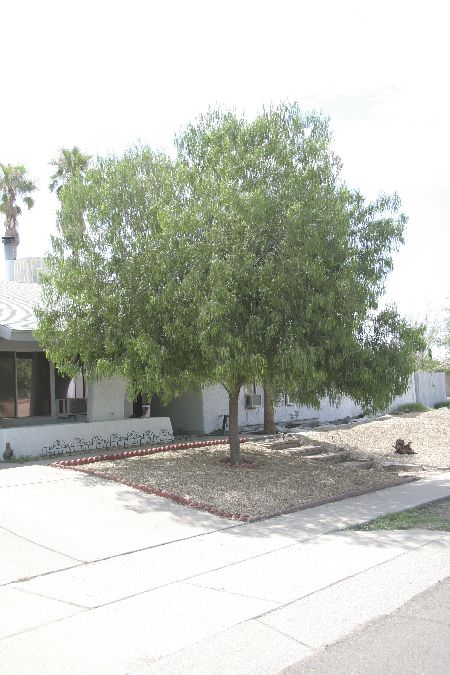
Geijera parviflora
Australian Willow
This is a graceful small tree for yard or patio. Weeping form is reminiscent of weeping willow. Canopy coverage: 314 square feet.
[Read More]Ginkgo biloba
Maidenhair Tree
This tree is treasured for its unique, fan-shaped leaves that turn a golden yellow in fall. Choice tree for lawn area. Canopy coverage: 1,257 square feet.
[Read More]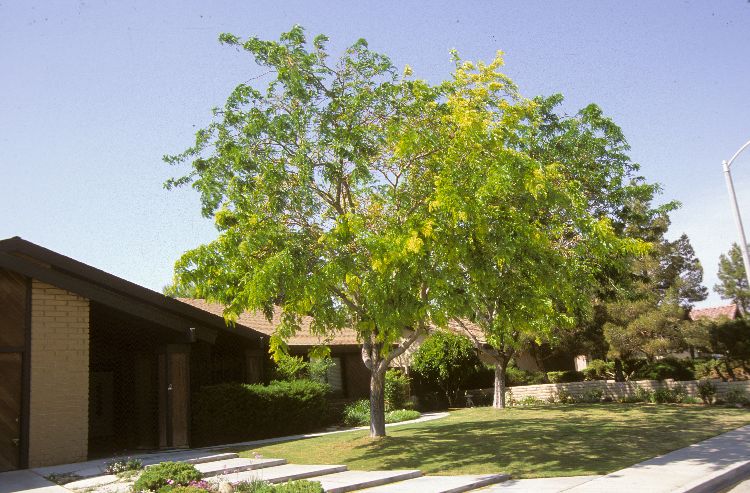
Gleditsia triacanthos inermis
Honey Locust
Upright spreading form helps make this a quality shade tree. Golden yellow fall color. 'Shade Master' is a popular selection. Canopy coverage: 962 square feet.
[Read More]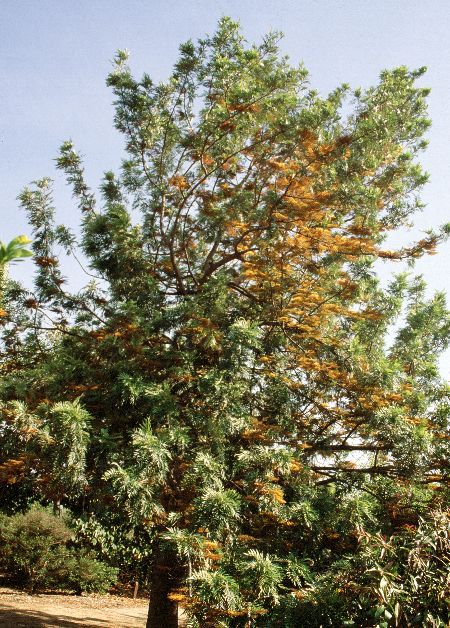
Grevillea robusta
Silk Oak
A fast-growing tree with a growth habit that changes over time. Young trees are pyramidal then develop a broad form accentuated with horizontal branches. Leaves have a thick, fernlike appearance, dark green above, silvery beneath. Young trees are more easily damaged by cold: hardy to about 24F. Accepts high heat, even desert heat. Heavy, sometimes messy leaf drop in spring. Canopy coverage: 707 square feet.
[Read More]Gymnocladus dioica
Kentucky Coffee Tree
Kentucky Coffee Tree is a large tree with an attractive, open form that is interesting when bare in winter. Flowers on female trees are following by large, heavy seed pods that are a rich, coffee brown color. Can be messy with pods and leaf drop. Adapts to poor soil. Accepts sandy to heavy clay soils. Canopy coverage: 962 square feet.
[Read More]Havardia pallens
Tenaza, Ape's Earring
Tenaza grows as an upright tree with long, straight branches. Thorny when young, mature trees produce few to zero thorns. Fragrant flowers bloom in clusters. Leaves are leaflets that look similar to those of Acacia or Mesquite, creating dappled shade. Canopy coverage: 314 square feet.
[Read More]Hibiscus syriacus
Rose of Sharon
When in bloom, Rose of Sharon reminds one of hollyhocks. It can be pruned to suit the needs of the landscape, from small tree to large, natural shrub or screen. Flowers are mostly shades of pink. Leaves have a coarse texture. Best with some protection from the sun in hot summer regions. Canopy coverage: 28 square feet.
[Read More]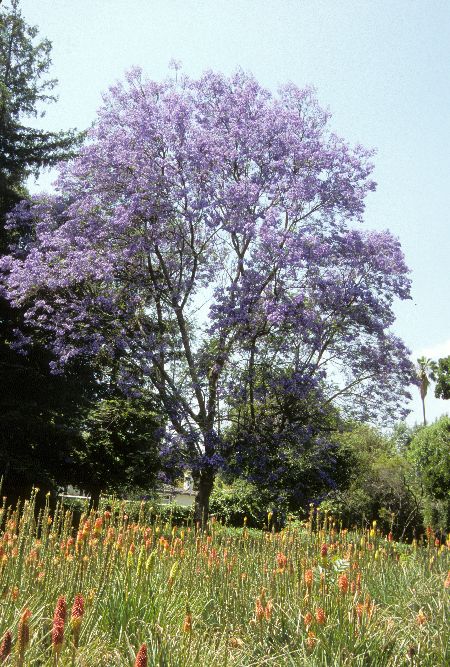
Jacaranda mimosifolia
Jacaranda
A large-scale tree most often planted in parks and commercial sites due to its size. Evokes a pleasing subtropical effect with late spring to early summer show of brilliant lavender-blue flowers. Canopy coverage: 707 square feet.
[Read More]Juglans californica
California Black Walnut
California Black Walnut can be grown as a multi-trunk tree or large shrub. It provides valuable food (the small nuts are edible) and shelter to wildlife. Urban development threatens natural stands so it is a good tree or shrub to nurture if it exists on your property. Canopy coverage: 79 square feet.
[Read More]Juglans nigra
Black Walnut
Black Walnut is a large tree for large landscapes. Growth habit is oval to rounded. It provides valuable food and shelter to wildlife. The walnuts that mature and drop from the tree in fall are of course edible, but it usually requires tree to reach two decades of growth before the crop is plentiful. Canopy coverage: 3,848 square feet.
[Read More]Juniperus californica
California Juniper
Form and mature size is highly variable. Stems and branches are irregular, with an open, upright shrubby form most common. Can become a tree with time, up to 40 feet high and as wide, but requires more moisture and deep, loose soil for this to occur. Light blue berries follow flowers, turning reddish brown at maturity. Canopy coverage: 314 square feet.
[Read More]Juniperus osteosperma
Utah Juniper
Utah juniper can be trained as a tree or large shrub. Despite its common name, it is the most common juniper in Arizona. Accepts dry rocky soils. Canopy coverage: 314 square feet.
[Read More]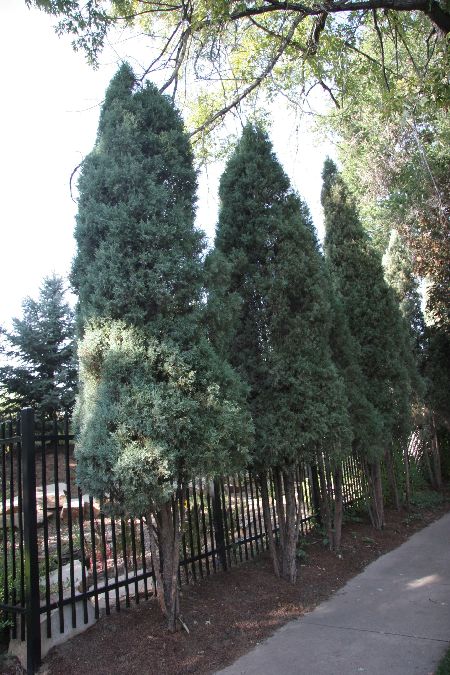
Juniperus scopulorum
Rocky Mountain Juniper
Many different selections of Rocky Mountain Juniper are available, with variable forms, textures and foliage color. Look for 'Skyrocket', blue-green foliage; 'Gray Gleam', blue-gray foliage, 'Blue Haven', deep blue-gray foliage; and 'Tolleson's Blue Weeping', drooping form with blue-gray leaves. Canopy coverage: 314 square feet.
[Read More]